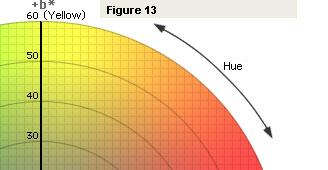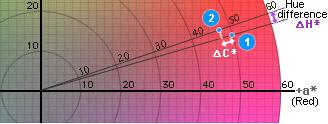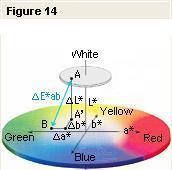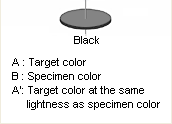Precise Color Communication
 |
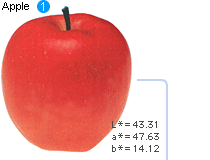 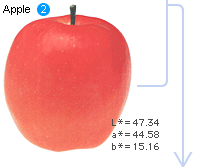 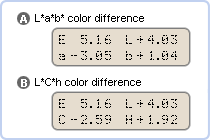 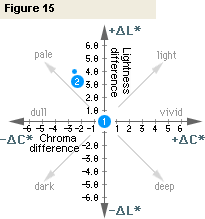 |
Minute color differences are the biggest headache anywhere that color is used.
But with a colorimeter, even minute color differences can be expressed numerically and easily understood.
Let's use the L*a*b*
and L*C*h color spaces to look at the color difference between two apples.
Using apple
In the L*a*b* color space,
color difference can be expressed as a single numerical value,
∆E*ab, which indicates the size of the color difference but not in what way the colors are different.
∆E*ab is defined by the following equation: If we put the values ∆L*=+4.03, ∆a*=-3.05, and ∆b*=+1.04 from display ∆H*=[(∆E*ab)2 - (∆L*)2 - (∆C*)2]1/2), is +1.92, which if we look at Figure 13, means that the color of apple Although words are not as exact as numbers, we can use words to describe color differences. Figure 15 shows some of the terms used to describe differences in lightness and chroma; the terms shown in this figure indicate the direction of color difference, but unless an additional modifier (slightly, very, etc.) is used, they do not indicate the degree of color difference. If we look at the plotted values for the two apples, we see that we should say that the color of apple
• "∆" (delta) indicates difference.
|
| 11/13 | ||
|
|


